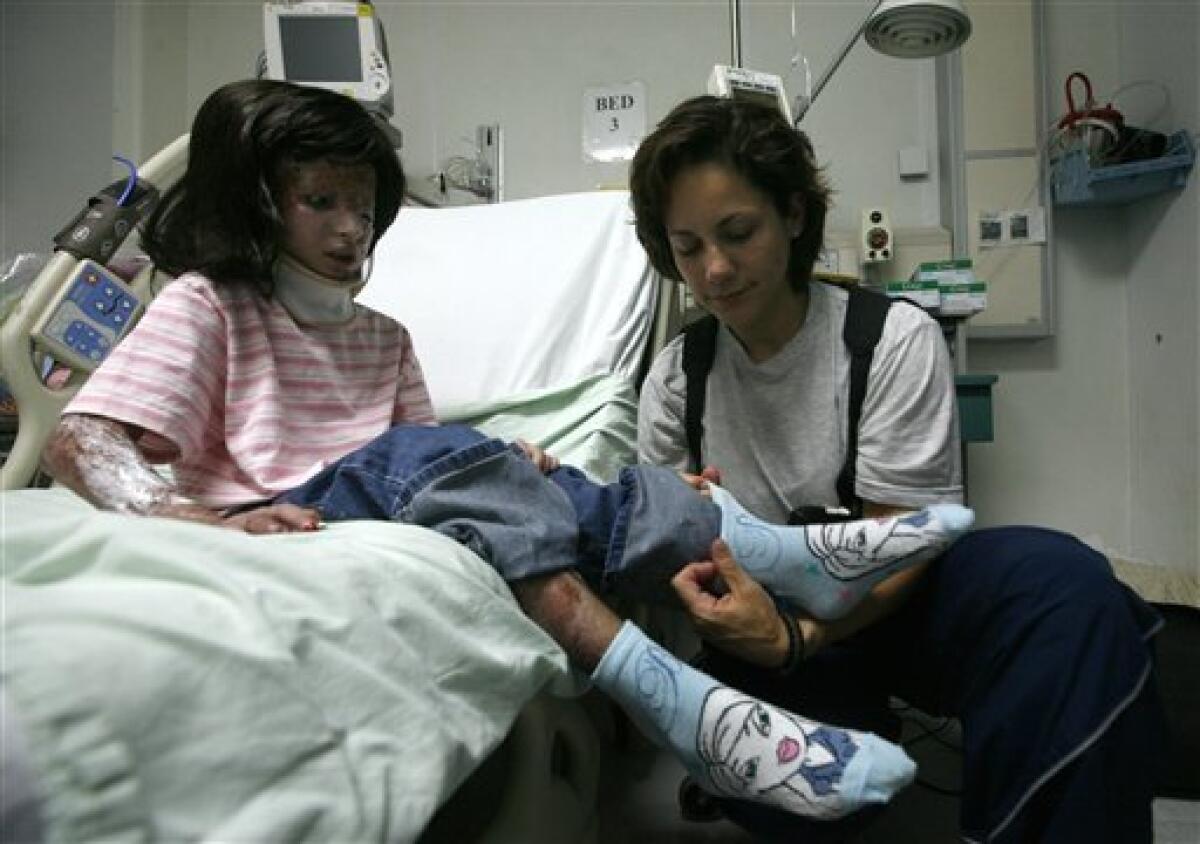Afghan girl burned by white phosphorus heads home

A nurse fixed a black wig on Razia’s scarred and disfigured scalp before the 8-year-old took off around the emergency room to bid farewell to the staff who cared for her after white phosphorous scorched her head, face, neck and hands.
When Razia came to the U.S. military hospital four months ago, Capt. Christine Collins didn’t think she would make it out alive. On Wednesday, the little Afghan girl left this military hospital for an arduous journey to her village, a 50-mile (80-kilometer) drive from Bagram Air Base.
“I am fine, I want to go home,” Razia quietly told Collins and a group of other hospital staff who had come to see her off.
Wearing a pair of blue jeans and a pink-striped shirt, Razia was eager to see her mother – who awaited her at a cousin’s house deep in the countryside still rife with insurgents. The two have not seen each other since shells ripped through their home on March 14 just after breakfast, killing two of Razia’s sisters.
It’s unclear where the white phosphorus came from that disfigured Razia for life – burning her face, now marked with permanent scars. Razia’s father, Abdul Aziz, blames international forces since U.S., French and Afghan troops gathered outside his home just before the shells were fired. U.S and NATO troops use white phosphorus to illuminate targets, create smoke screens and destroy old bunkers, but say they don’t use it as a weapon.
A U.S. military spokeswoman with NATO’s security force said military officials can’t be certain whether it was their own round or an enemy round that hit Razia’s house. In Paris, military spokesman Christophe Prazuck said French troops don’t have white phosphorus bombs, and he couldn’t say whether rounds used to create smoke screens or illuminate targets were employed in the March 14 battle.
White phosphorus burns until it’s gone. And with burns over 40 to 45 percent of her body, few thought Razia would survive when she was first airlifted to the U.S. hospital.
“This is kind of dream come true for everybody, for her to be able to go home,” Collins said, while choking back her tears.
“It was a long journey for both her and I. She is like my fourth daughter,” she said.
Collins, a military nurse from Miami, Arizona, and a mother of three girls back in the U.S., was the first to care for Razia, and she slowly coaxed a smile and then a step and finally a recovery from her – over four months and 15 surgeries.
She will be coming back again for treatment at the hospital in Bagram after a couple of weeks, and then also continue with therapy at a hospital in Kabul.
But the scars are there for all too see and the hospital staff quietly worries that Razia may never have a normal life in Afghanistan, where women in the countryside are mostly defined by the marriage they enter.
“I will always wonder and think about her for the rest of my life,” Collins said.